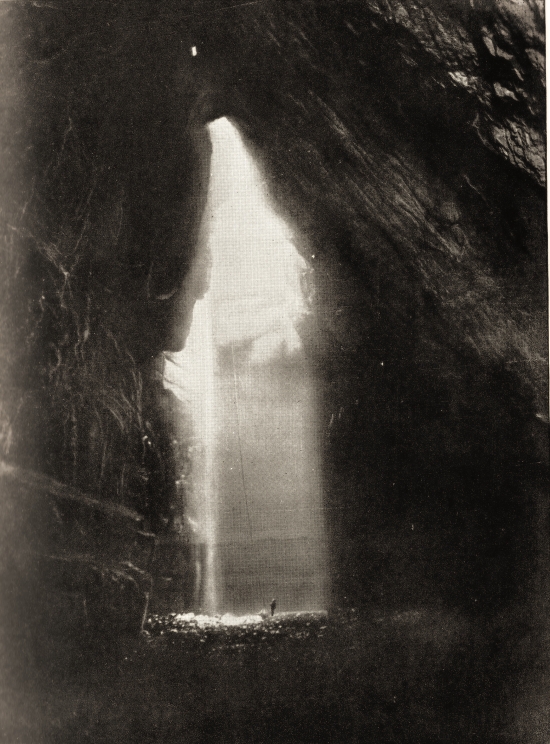Gaping Ghyll In 1911
By Alexander Rule.
Rarely have the pot-holing members of the club been favoured with a season so perfect in every way for the exercise of their craft. For weeks together, the becks were almost dry – Fell Beck, in which we were particularly interested, being represented during the greater part of the summer by a much attenuated trickle of water.
At Whitsuntide a large party assembled at Gaping Ghyll under glorious weather conditions which continued during our stay, and some useful work was accomplished. The usual advance party went up on the Friday night. And so expeditiously were the preliminary preparations carried out that Booth was able to make the first descent at 4 p.m. on Saturday, fix the telephone and guide line and conduct two visitors round the Great Chamber.
Next morning an early start was made and the survey party, consisting of Horn, Rule, Dalton, Chappell, Brown and Mr. J. S. Thomas were able to begin work at 8.30 a.m.
During the day, the survey of the right hand branch passage from the stream inflow to the end was carried out. The new plan of the old south passages is now complete and after testing our measurements carefully by means of several natural checks, we have good reason to be satisfied with the results of the survey.
On the Monday, the same party began the survey of the south-east or “Pew Passages”. Of these, the main passage and the branch to the left of the “T” junction were surveyed some years ago, but the right-hand branch has not yet been mapped. We journeyed to the end of the right-hand branch and commencing work there made good progress during the day. Owing to the unusual character of the passages the survey of this portion required considerable care, but we were able to extend our measurements as far as the narrow squeeze between fallen blocks (a spot which will be remembered by all who have encountered it), before it was necessary to return to the Great Chamber. Several members were obliged to leave early and ascended at once. Others remained in the chamber and were photographed in a group by Hastings, who had spent a busy time in charge of the numerous visitors who made the descent during the day.
In the evening, some of the party walked over to the Hill Inn and on the return journey reached the top of the col at midnight, on what was perhaps the most perfect night of the year.
There are two points of interest in connection with this expedition. In the first place, so small was the volume of water in the Spout Waterfall that oilskins were entirely unnecessary and we landed at the bottom of the shaft perfectly dry. Secondly, a new form of acetylene lamp was tried in place of the usual candles. These lamps have naked flames, are made entirely of brass, and burn nine hours with one charge of carbide. They behaved admirably, and with this greatly increased illumination we were able to observe many details of the passages which are invisible in the dim light of a candle flame.
The circle round the camp fire at night was as lively and versatile as ever, and a novel feature of the entertainment was provided by Brodrick, whose aquatic performances were greatly appreciated by the spectators.
